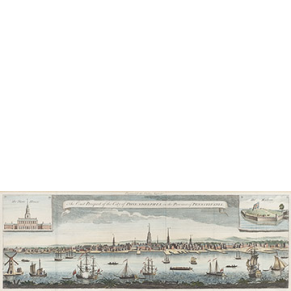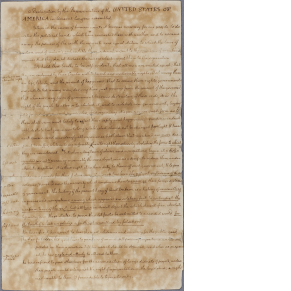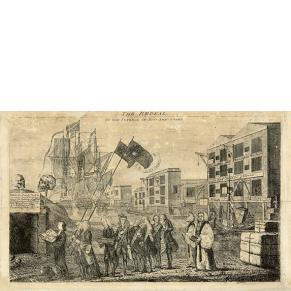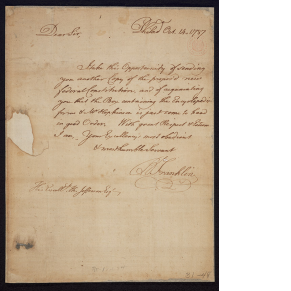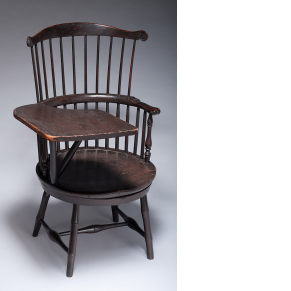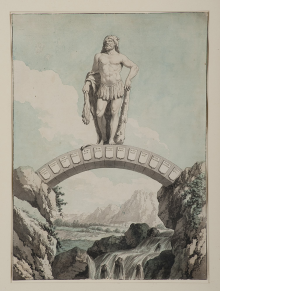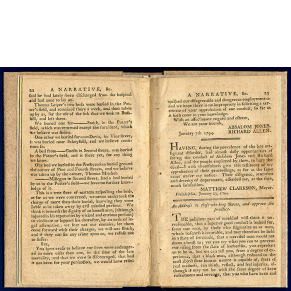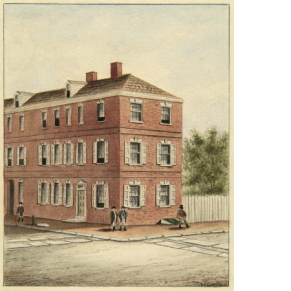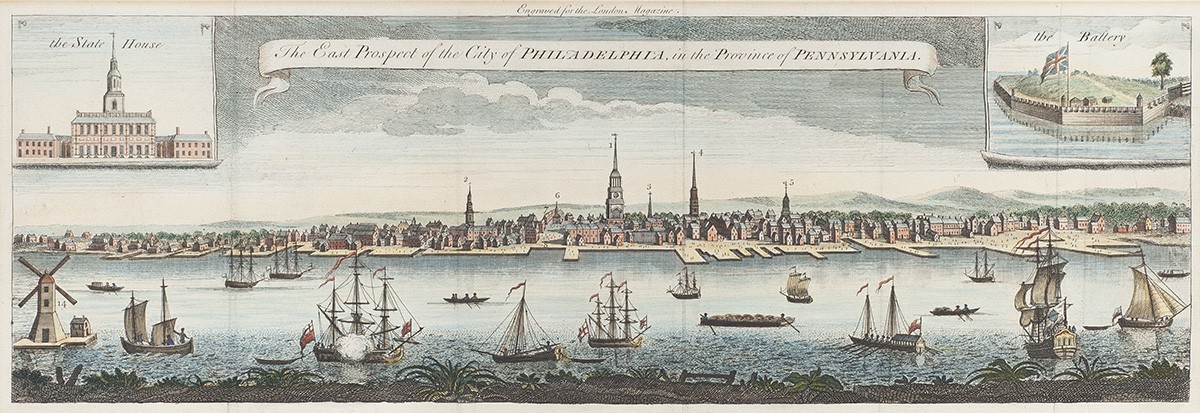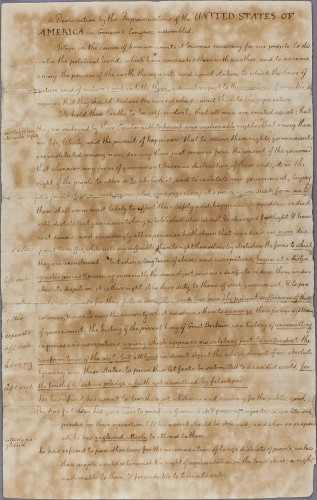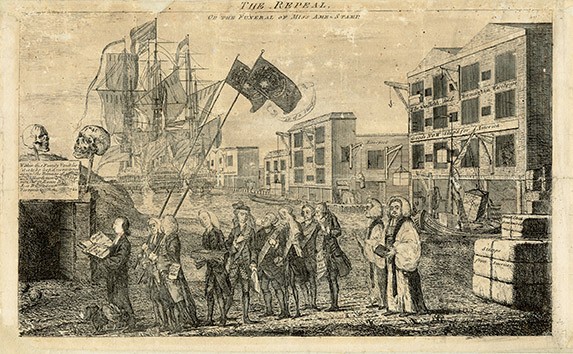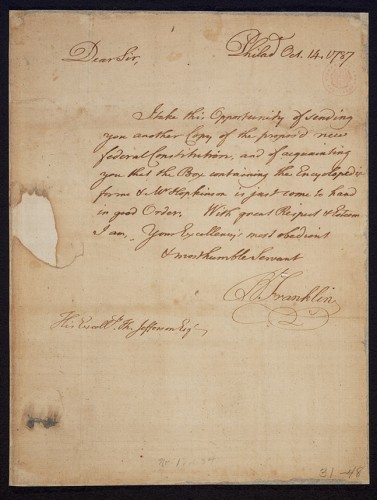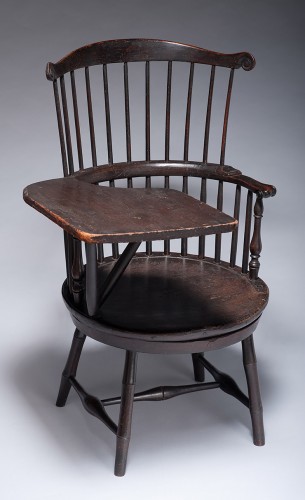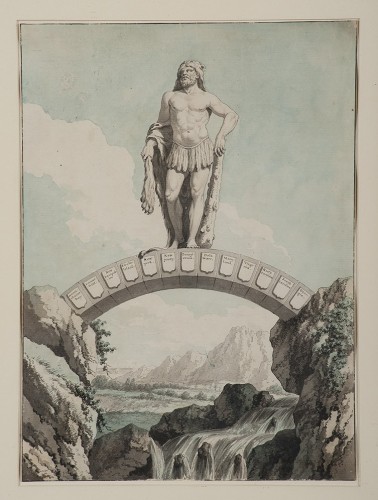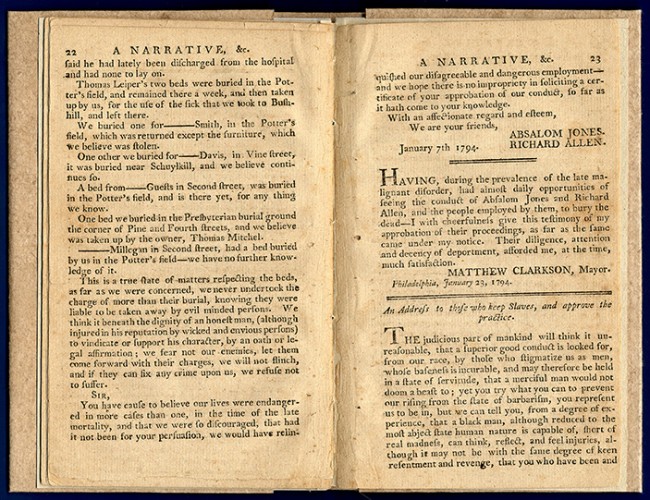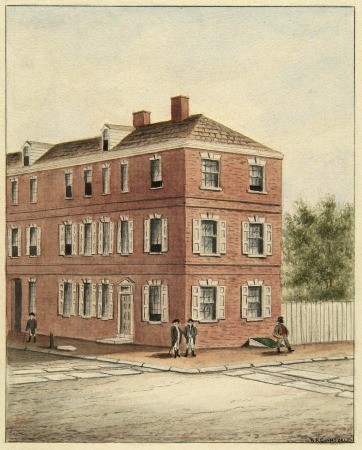Support provided in part by the Philadelphia Cultural Fund and the Pennsylvania Historical and Museum Commission.
Jefferson, Philadelphia, and the Founding of a Nation
This exhibition commemorated Jefferson’s long association with Philadelphia. The first half focuses on his visits to the city in 1775 and 1776, when, as a delegate to the Continental Congress, he was selected to draft the Declaration of Independence. A handwritten copy of Jefferson’s draft, which includes annotations showing passages that were later deleted by Congress, was the first object visitors saw as they entered the exhibition. Jefferson’s now fragile Declaration manuscript was specially framed for the exhibition so that his handwriting on both sides of the document was visible. Cross-outs, notes in the margins, and alterations to the text show the changes that were made to Jefferson’s draft. These markings reveal the arduous democratic process that brought the Declaration into being.
The second half of the exhibition revealed Philadelphia as it was in the last decade of the 18th century, when Jefferson returned to serve as Secretary of State for George Washington and Vice President for John Adams. In 1797, he became president of the American Philosophical Society (APS) and continued in that role until 1814—before, during, and after he was President of the United States. In a letter accepting the APS position, he stated that he deemed it “the most flattering incident of my life, & that to which I am the most sensible.”

